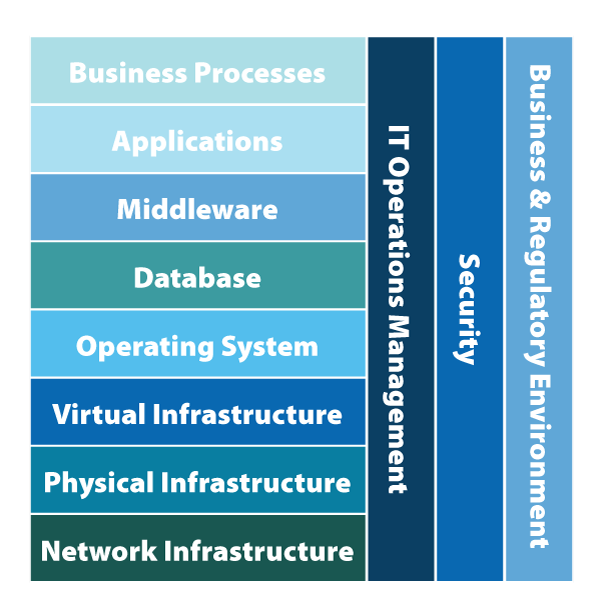Spring presents a good time to re-evaluate your business strategy as a technology service provider (TSP). This process usually starts by taking a good look inside and outside of your company to assess your strengths, weaknesses, opportunities, and threats. From there, a strategy can be built in a way that leverages your strengths, reduces your weaknesses, makes the most out of the opportunities in front of you, and always keeps an eye on mitigating threats. After going through these steps, however, a common question that crosses most of our minds is, “Should I verticalize my business?”
There’s no shortage of blogs and articles out there about why TSPs should move to an industry vertical. I actually agree with most of what’s out there, but allow me to share my two cents on the matter.
Note: The Coronavirus disruption has created a lot of pain for TSPs and their clients worldwide. It has exposed weaknesses and the potential threats of our different strategies, creating a laser focus on protecting our current businesses. We must quickly shift our perspective to the lessons we will learn and what we want our businesses to look like when this is behind us. Strategy could not be more critical than right now so we are prepared to execute with a clear vision as quickly as possible. A wise man once told me, “Don’t waste the pain.”
How to target vertical markets
Industries are certainly attractive, but I prefer a much broader definition of vertical market:
A vertical market is a market in which vendors offer goods and services specific to an industry, trade, profession, or other group of customers with specialized needs. The single defining characteristic of the participants in a vertical market is competition within a well-defined segment.
Healthcare, legal, medical, banking, and financial markets have been attractive for today’s TSPs. When looking to target these or other vertical markets, focus on how you can differentiate your services and reduce your competitors’ chance to get in—it’ll make marketing and selling a lot easier.
Clients prefer a vertical specialist if they can find one. You can increase your value as a business consultant by understanding your clients’ industry, trends, terminology, regulatory and compliance challenges, and more. Adding more value often means you can charge more for your services and generate efficiencies internally.
But there are some downsides to consider; one being that you could reduce the number of potential clients by serving just that market. And in other cases, if you’ve grown up as an IT generalist, this type of move could feel like a big stretch. These fears have kept most TSPs on a horizontal strategy—anyone who will pay for quality services within a size and distance that is comfortable to support.
Becoming an industry vertical TSP can be compelling if we face those fears. I also believe every TSP is more prepared to pursue a vertical market than you believe.
Our mistake is that we think we must choose one industry. I managed a 4,000 endpoint TSP and we had no more than 10% of our business in any one industry at an average of 20 seats per managed client (you can figure out your mix quickly if you use the industry codes in ConnectWise PSA™). There was no obvious industry specialization, so then what?
Choosing a vertical is about taking your and your team’s unique skills, passions, and capabilities, and focusing that energy on a specific need of a group of companies—or matching it with an emerging threat or opportunity in the small-business IT industry. Many broadly adopted technologies or solutions today started as a niche offering—a vertical by the above definition. They may have been early problem solvers in areas of security, cloud, or disaster recovery. The most recent ChannelE2E Top 100 Vertical Market MSPs list supports this perspective. I was surprised to see that most are not industry-focused.
I admire those entrepreneurial TSP spirits that created new categories of solutions. Art Gross, a TSP, created what we know as HIPAA Secure Now and Breach Secure Now to meet needs in the market he served, and then spun them off into their own businesses. Carvir was a TSP that used ConnectWise Command™. They liked the Continuum business model and applied it to offering cybersecurity services. They built Carvir into a meaningful business and ended up selling it to Continuum in mid-2018. The list is long of creative and bold TSPs that have expanded their businesses by “adding a niche offering” to their standard offering. They went vertical! They pushed through fear of failure and created attractive offerings.
Think about the business/technology stack our clients use:

Stare at that picture for a while and many opportunities for vertical specialization suddenly appear. It reminds me of those 3-D pictures with dinosaurs, jet fighters, and other hidden objects that appeared when we got our focus just right. It takes some work and patience, but you can learn to develop that focus.
Choosing to take time to focus on what isn’t already obvious is critical. You can recapture some of your time: consider outsourcing the mundane and well-understood parts of your business that don’t create differentiation any longer to a company with scale.
Here’s what comes to my mind:
- Networking - What do I know that most don’t, software-defined networking for SMB, IOT for SMB
- Infrastructure - IOT device bundles, management for SMB
- Applications - Industry specialization, IOT, analytics, AI, applying blockchain
- Security - Lots of attention here but lots more to be done, especially with 30B devices soon on the internet
- Regulatory - Classic industry play but it is growing into new industries that are seeing many new regulations; data that must stay in-country
- Business Environment - Scale down offerings that already exist in the enterprise space
My recommendations:
- Outsource delivery work where you can do it profitably to create time to think big
- Write down your (and team’s) passions, skills, and experiences
- Assess your current client base by industry, key technologies, and core software packages
- Understand the opportunities: read industry articles, talk to your peers, and talk to millennials and teens
- Think about the technology stack that makes your SMB clients productive
- Face your fears, and develop a good support system if you don’t already have one
The change we’re all experiencing is quickening and unprecedented. However, wherever there is change, there is opportunity. Many may be frozen by fear, but the leaders of change will become the next big winners. Thinking about vertical markets is a great way to sharpen your focus and build confidence in your ability to be one of those leaders.















